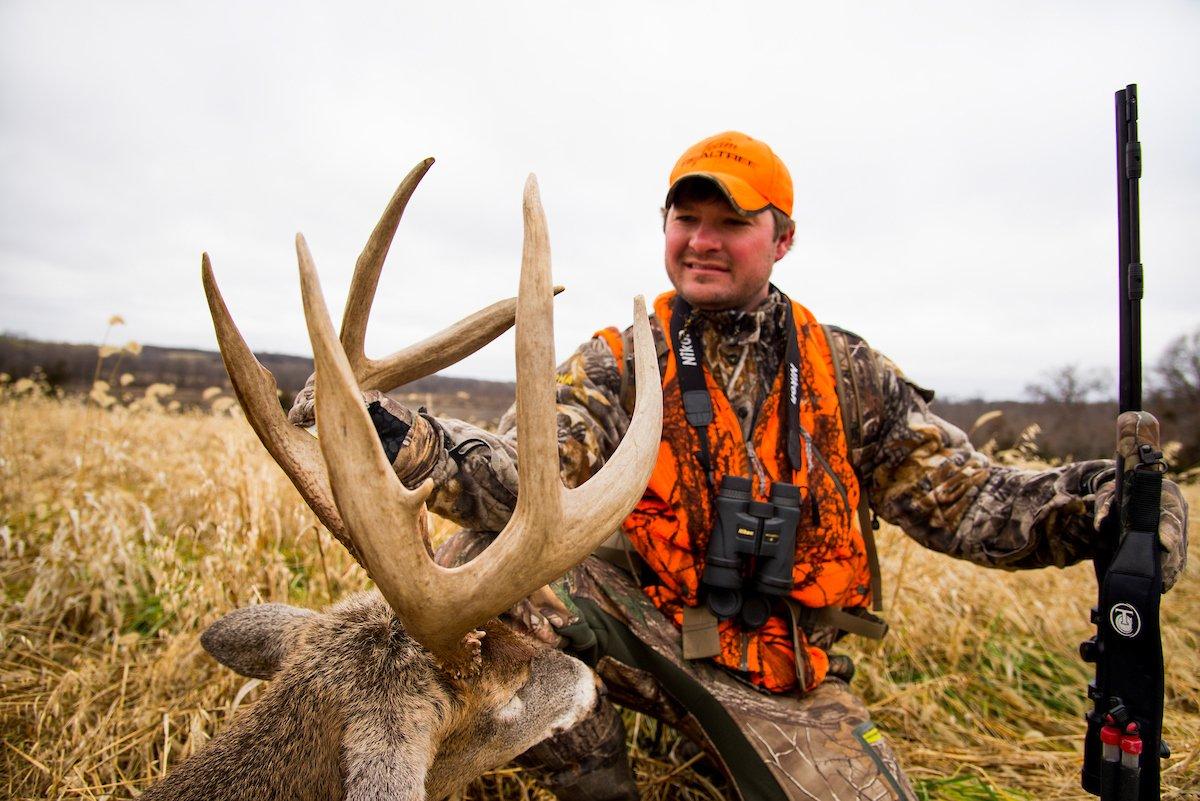Do You Prefer to Buy New or Used Hunting Guns?
Lately the trend in rifle cartridges has been that bigger is better and I am not sure that is necessarily a good thing. I don't believe that you should run out and buy the biggest, baddest fire-breathing magnum to overcome shooting inadequacies. There is a definite relationship between muzzle blast, recoil and accuracy. There is no doubt that I can sit down at the bench and shoot very tight groups with a small caliber rifle much easier than I can with a large one. We owe it to the game we pursue to put the first bullet in the right place to get the job done in short order.
Shooting a super magnum just because you're afraid to make a marginal shot does not make sense to me. I have shot and will continue to shoot a Thompson Center Arms rifle in .270 Winchester for whitetails, because for me, I can shoot this round very accurately and comfortably. I have owned bigger rifles and have found that my accuracy drops off as the level of muzzle blast and recoil increases. I don't consider myself recoil-sensitive, but I don't enjoy getting pounded by it either. My theory is that a deer shot in the rear end with a magnum is still a deer shot in the rear.
I say pick a caliber that you can comfortably shoot and practice with it as much as you can. Become familiar with the ballistics of your rifle so that when the moment of truth presents itself, you are confident that you can put your bullet in the right spot. If this is some kind of big magnum rifle, then so be it. But if you're like me it will more likely be something in the mid-range calibers like a .25-06, .270, .280, 7mm-08, .308, .30-06, or the like.
Once you choose a gun, it's time to get to work. This may be met with some resistance, but I have found that in the long run, a little inconvenience in the beginning is well worth it. Whenever I get a new rifle or a new barrel for my Thompson Center Encore, there are a few things I do to make sure I get years of accurate shooting for my hard-earned money.
Before I ever send a bullet down the pipe, I give my guns a thorough cleaning. Many times, guns are packed with oil from the factory to keep them from getting any rust. So, I'll run several patches down the bore to clean out the excess oil and wipe down the outside as well. Next, I use a bore brush with a good solvent on it and give it several good passes through the bore and finish off with a couple of dry patches. If I am going to shoot right away, I won't oil the bore. If it will be some time before I will get to the range, I will add a light coat of oil to the bore and the outside surfaces.
For the first 30 shots or so, I will clean the bore after every shot. Doesn't sound like a load of fun and it isn't nearly as fun as sitting down and hosing a couple of boxes downrange in rapid fashion. The inside of the barrel -- as it comes from the factory -- normally has some little imperfections in it from the rifling process. This is true with all but the high-end custom-barrel makers. There are little burrs and rough edges in the lands and grooves, and every time you fire a round, you will end up with little pieces of the copper jacket hung in the bore. Take the time to clean the barrel after every shot for the first 30 shots and you will have "smoothed" out most of these imperfections and greatly reduce fouling in the future. The result will be a more accurate barrel.
After 30 shots, I still clean mine every three to five rounds up to around 100 shots. Your barrel theoretically will continue to shoot better and better until around 100 shots. At this point, you should have it pretty well "broken in". You can also buy a little kit that will speed this process. It does however require that you handload your bullets. Basically you take the bullet before loading and roll it between two pieces of metal with some abrasive on them. By doing this, it imbeds the abrasive in the soft jacket of the bullet. Now when you fire the bullet down the bore, it polishes it with the imbedded abrasives. The kit contains several different abrasives and you start with the roughest and finish off with the least abrasive. When finished, you should have a highly polished bore free of burrs and imperfections. When you have a barrel that resists copper fouling with repeated shooting, you have a barrel that is capable of great accuracy.
That's how to choose a gun and break it in. Now you're ready for the woods.
Don't Miss: 20 Deer Hunting Lies Your Granddaddy Told You
Editor's Note: This was originally published December 2, 2004.
Are you a deer hunter wanting to learn how to accomplish your goals? Check out our stories, videos and hard-hitting how-to's on deer hunting.







